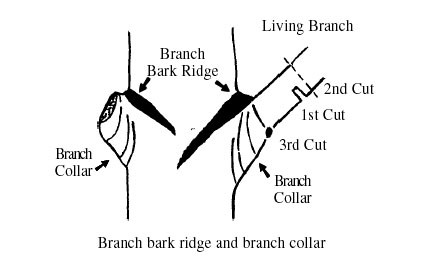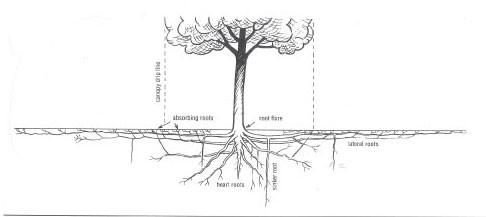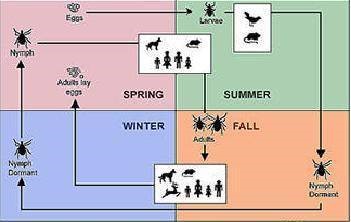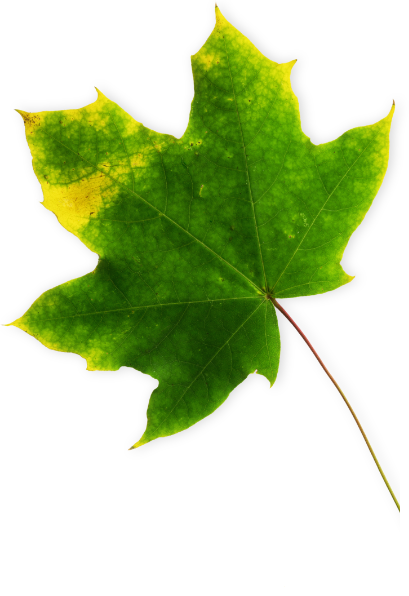In this day and age of internet and social media, there tends to be plenty of misinformation shared. This even holds true on subjects involving the green industry. Today we’re going to share and debunk 3 spring tree care myths you may have read about.
Myth – Pruning in the spring will make trees “bleed” and hurt the tree.
In the early spring sap can leak out through pruning cuts when sap is flowing heavily up to the buds from the roots to push spring growth. Although some species of trees are more prone to “bleeding” than others such as maple and birch, the bleeding is temporary and does not cause harm. Normal pruning practices will not cause long term damage and sap flow will stop naturally as the tree begins to compartmentalize the wound. It is not recommended to use any kind of tree wound paint to seal the cut.

Myth – Branches should be pruned as close to the trunk as possible so the tree can heal better.
Flush cuts create larger wounds than are necessary and are also harder for the tree to compartmentalize. A branch should be pruned where the branch tissue meets trunk tissue called the branch collar. The branch collar is the slightly swollen bulge at the bottom of the branch and the bark ridge is on the top where branch bark meets trunk bark. The final cut should be made just outside this transition without cutting the collar or leaving a stub. Larger cuts take longer to close, but leaving the collar allows the tree seal the wound as quickly as possible, limiting the chances of decay.
Image attribution: Virginia cooperative extension
Myth – After pruning a branch of a tree it needs to be painted to help it heal.
Trees do not heal the same way people do and cannot repair tissue that has been damaged. Rather they grow over the wound in a process called compartmentalization. The tree does not need any help doing this and tree paint will not protect from decay or insects. Large wounds will take longer to close than smaller ones making it more important to properly prune young trees so larger pruning cuts are less necessary later.
Myth – Newly planted trees need to be staked or planted deep so they won’t fall over.
Most trees do not require staking at all unless the site is particularly windy or has too small a root system to support itself. It is important for the tree to move and sway to develop properly. If staking is done it should not be too tight and should not remain on the tree for longer than 1 year. Guying materials that are not removed can eventually girdle the tree. Planting the tree too deep will also cause damage. Trees should be planted so that the root flare is exposed and only the roots are buried. It is actually better for a tree to be planted a little high than to be too low.
Myth – If you pile mulch high around a tree you won’t have to weed or replenish mulch as often.
Mulching too high, particularly up against the trunk will lead to decay and can smother a tree over time. Too much mulch can also encourage roots to grow up where there is more air and water and lead to root girdling. Apply mulch no more than 3 inches deep and do not allow it to come in contact with the bark keeping the root flare exposed.
 Myth – The root system of a tree mirrors the canopy of the tree.
Myth – The root system of a tree mirrors the canopy of the tree.
Although the majority of a tree’s roots can be found within the drip edge of the canopy the roots will grow well beyond. Depending on soil type, most roots will grow within the top 12 inches of soil and typically will not go deeper than a couple of feet. This top layer of soil is where water and air are most abundant. It is also where most of the soil biology is releasing nutrients.
Image attribution: University of Maryland Extension

Myth – Ticks die in the winter so I don’t have to worry.
Every season is tick season. Ticks have a somewhat complicated life cycle that takes at least 2 years to complete. Eggs hatch in the spring and the larval tick will feed on a small mammal usually a mouse or chipmunk. This how they become infected with Lyme and other diseases. The larva will then molt to a nymph that will overwinter. They will be inactive as long as temperatures are below about 40 degrees. However, if it warms during the day, they can be active and questing for a meal. The nymphs, if not fed, will be around for the spring and molt into adults in the summer. Adults will overwinter once again, laying eggs for the next generation before they die. These life cycles can overlap or take longer depending on when a tick finds a host.
Image attribution: The Florida Department of Health
For additional reading about Plant Health Care topics, check out our other blogs by clicking here.
